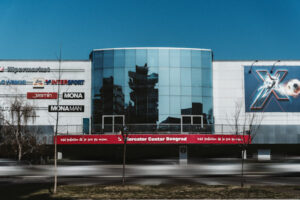BY JOSIP KARDUN
The convergence of retail trends in CEE and Western Europe is gaining momentum and, for the first time, the influence of CEE is being felt in the Western European retail sector as the core economies of Poland, Slovakia, and the Czech Republic mature.
As these economies reach maturation, they are becoming closer in profile to the developed European markets and their retail markets now draw significant comparisons with that of Germany. One such trend is the consolidation and concentration of retailers: In Poland, the modern retailers’ market share is 72%, versus 88% in Germany.
The CEE core economies, particularly in the capital and prime cities, should no longer be regarded as “emerging,” but “emerged.” Planning and development processes are more transparent and better governed, and decisions are being approached more sensibly and holistically. We expect these changes will continue to permeate into the regions of those countries during 2016 and beyond.
The convergence of country risk is reflected in the spreads of long-term government bond yields. Nevertheless, these markets remain particularly attractive for investment due to the potential for investment yield compression. Despite impressive progress, there is still significant room for growth as these countries are constantly evolving. In Poland, the recent shift in government has instigated changes that we still need to digest; some have the potential to boost consumer spending, while some have received mixed reactions from analysts and investors.
Retail is a global business, which means there is a cauldron of ideas and experience across the Americas, Asia-Pacific, and elsewhere to draw from. The trends being felt in Western Europe, such as the growing importance of the retail/leisure mix and the power of ecommerce, are also clearly discernible in CEE markets. For instance, online retail is estimated to account for 5% of total retail in Poland, versus 6.6% in Germany, with accelerating growth projected for both countries.
One reason for the emergence of these trends is that competition in the CEE retail sector has intensified over recent years. This demands higher levels of professionalism and prompts shopping center owners to refocus strategies towards meeting customers’ and retailers’ specific demands and requirements. This is true across Europe and I expect we will see consumers’ influence continuing to grow as shopping center owners and retailers fight to attract customers and drive footfall. More than ever, shopping center owners will need to be able to adapt to and pre-empt retail trends to ensure their businesses are future-proofed.
The ubiquity of the retail/leisure mix strategy is symptomatic of this, as customer behavior moves towards the use of shopping centers as social meeting points for eating, drinking, and spending time with friends and family, rather than simply functional places to shop. According to a recent CBRE report, 28% of shoppers in the Czech Republic and 26% in both Poland and Germany value the availability of food and beverage options when choosing where to shop. I see the momentum behind this trend only building in 2016.
Allied to this is digital advancement, which, as we all know, has had a transformational impact on the sector. It will continue to have a big influence, but the gloom-mongers who predicted shopping centers’ death knell have been proved wrong. There is now an industry-wide view that the coexistence of clicks and bricks provides the optimum conditions for retail success. Indeed, the digitalization of retail should be embraced as another channel through which to interface with customers and grow.
Again, it remains crucial for shopping center owners to retain flexibility and to show the requisite adaptability towards the demands of the sector, providing the right product at the right time to ensure long-term survival and success. Investment liquidity in the sector remains healthy and there is still huge demand for prime-quality retail assets. I expect this to continue in 2016, while the divergence in investment into prime and secondary retail should continue to shrink.
Retail trends have never been so consistent across the European Union, nor the customer so vocal. It is against this background that the ICSC will be driving its priorities in 2016 and I am relishing the challenge of my new role.
What is your opinion on this topic? Discuss it with us! Send your opinion to opinion@across-magazine.com !






